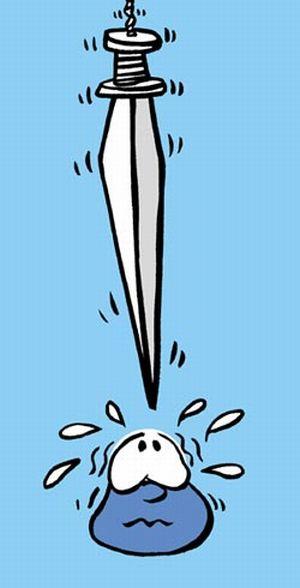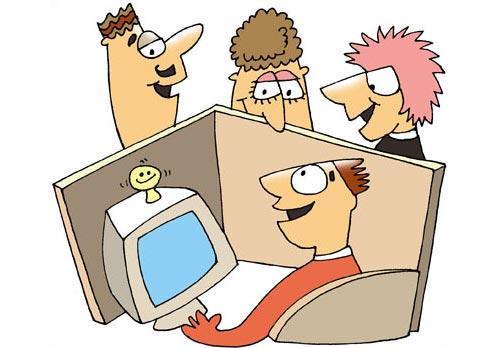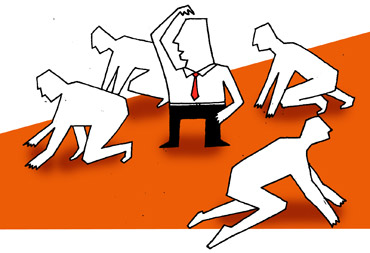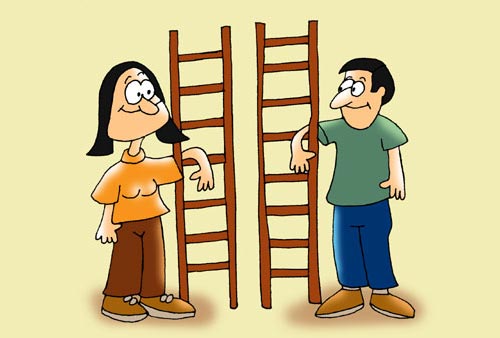Courtesy Yourstory.in
Manoj Gupta, founder and CEO of Craftsvilla.com tells you how to use the various laws in physics to deal with multi-dimensional stresses at work. Illustrations by Uttam Ghosh and Dominic Xavier
Stress Analysis was one of the most boring classes at the IIT Bombay and I wished I never have to delve into it again.
I was forced to study it once again not to design any efficient structure or material but to deal efficiently with powerful multi-dimensional stresses of entrepreneurship journey.
As entrepreneurs, we are hammered, bolted, culled, slaughtered, nuked everyday from multiple directions by our customers, sellers, investors, employees, family members and government. And unless we master the science of managing the accompanying stresses, the journey most likely will terminate before the dawn comes.
Before we get into the first order solutions of dealing with stresses, let's analyse what is a stress and the various dimensions of it.
In physical world, stress is an “internal reaction” in a material object to variety of external forces applied on it and is a function of “material properties” unique to that material object.
Strains are deformations formed in a material object as a result of these stresses and are usually function of time too.
Similarly, we also develop internal stresses as a reaction to external forces applied on us.
It’s important to highlight that these stresses are a function how we are reacting to a situation and the circumstance around us.
Stresses are not given to us by anyone, we develop them internally.
Different individuals develop different types of stresses for similar types of external forces.
Similar to material objects, these stresses, over time can develop strains and deformations in our body which sometimes are irreversible.
So what can we do to minimise strains in our body developed due to stresses?
Here are five ways of dealing with them by using Physics and its laws

Please click NEXT to continue reading...
1. Be elastic (Be flexible)
Elasticity or Flexibility is one aspect which materials develop to deal with external forces as described by Hookes Law.
The objects which are elastic develop lesser strains and deformations.
Similarly if we are flexible in our approach, mindset and body, there will be lesser strains to our body and mind.
For example, if you are flexible about when an employee can come to work and leave, when s/he can assume multiple roles and are comfortable about him/her taking different approaches to finding a solution or in terms of maintaining a schedule so as to give more time to your family, it can all reduce your chances of generating strains in your body.
2. Lower your entropy (Lower your internal chaos)
Photographs: Andrew Mason/Wikimedia Creative Commons
Entropy is a measure of “Chaos” in the physical world.
It is a Physics law that systems with lowest entropy have more available energy for useful work.
Similarly if we can reduce our internal chaos, we can have more energy and lesser work related stress.
By focusing on our goals and not diverting, by prioritising our tasks, by taking deep breaths or running to give more oxygen to our mind and body or by doing Yoga to calm down our mental disturbance, we inherently are reducing chaos and therefore internal stresses which develop.
3. Increase coherence (Promote in-sync teamwork through goals and actions)
Coherence is one of the concepts from the Wave Theory.
It says that 'Coherent' waves are those which 'constructively interfere' and not 'destructively interfere'.
A coherent system is more stable, can tolerate disturbances better and can build (scale) further by adding new coherent waves.
Similarly building coherence among your team, investors, sellers, customers and family, can reduce stresses a lot.
Make sure you communicate priorities of tasks, goals, issues, challenges and ensure that actions to solve or achieve them are all coherent and not going in different directions.
Reducing stresses among team members with coherent actions, communication and goals can increase your start-up's chances of success to a great extent.
4. Lower your centre of gravity (Shed bad baggage)
Systems with lower centre of gravity and wider foundation are more stable to external forces and develop lesser stresses.
An inverted cone is a great example of a stable system.
The wider your foundation is and lesser bad baggage you have to carry in your start-up journey, lesser will be stresses for you and your team/company.
Make sure you build a great foundation before you grow up.
Ensure bad employees, partners, sellers etc are thrown out of your 'cone' to ensure more stability for your company.
5. Increase particle to particle interaction (Promote communication)
Almost all the matter in this world is held together by four fundamental particle to particle interactions -- gravity, electromagnetic, weak and strong forces.
These interactions help matter withstand external forces and internal stresses.
Similarly your start-up will stand together with minimal stresses, if there is better communication between team members, between you and team members, between your company and customers/sellers and between you and your investors.
Lesser the interaction, weaker your company will be and more likely to fail with slightest of stresses.
I hope you all can benefit from these basic laws of Physics to reduce your stress.
And always remember 'stress' is your own internal reaction and 'not given' to you.
While you cannot manage external factors which are causing it, you can manage internal stress it by following some Laws of Physics.







Comment
article